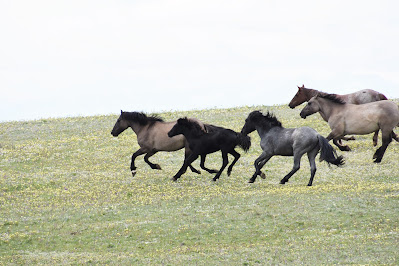Are Wild Horses & Burros Overpopulated?

The Bureau of Land Management (BLM) frequently states that wild equines are overpopulated, and many believe it without question. The BLM's claims are correct and based on science, right? Maybe not. Let's dig into this deeper - you may be surprised at what we find. First, it is necessary to note that the BLM's leadership is very much against wild horses and burros. Why? Because many ranchers in the livestock industry hate wild horses and burros since they compete for the forage on the range. Ranchers have a lot of power and influence in the BLM's decision making. Not to mention that nearly every member of the Bureau of Land Management Wild Horse & Burro Advisory Board is for livestock and against wild horses; this is obvious by their statements and votes during board meetings. The BLM's method for population counts is not efficient. The Double Observer Method is conducted over several days as the BLM counts wild horses and burros from ...




